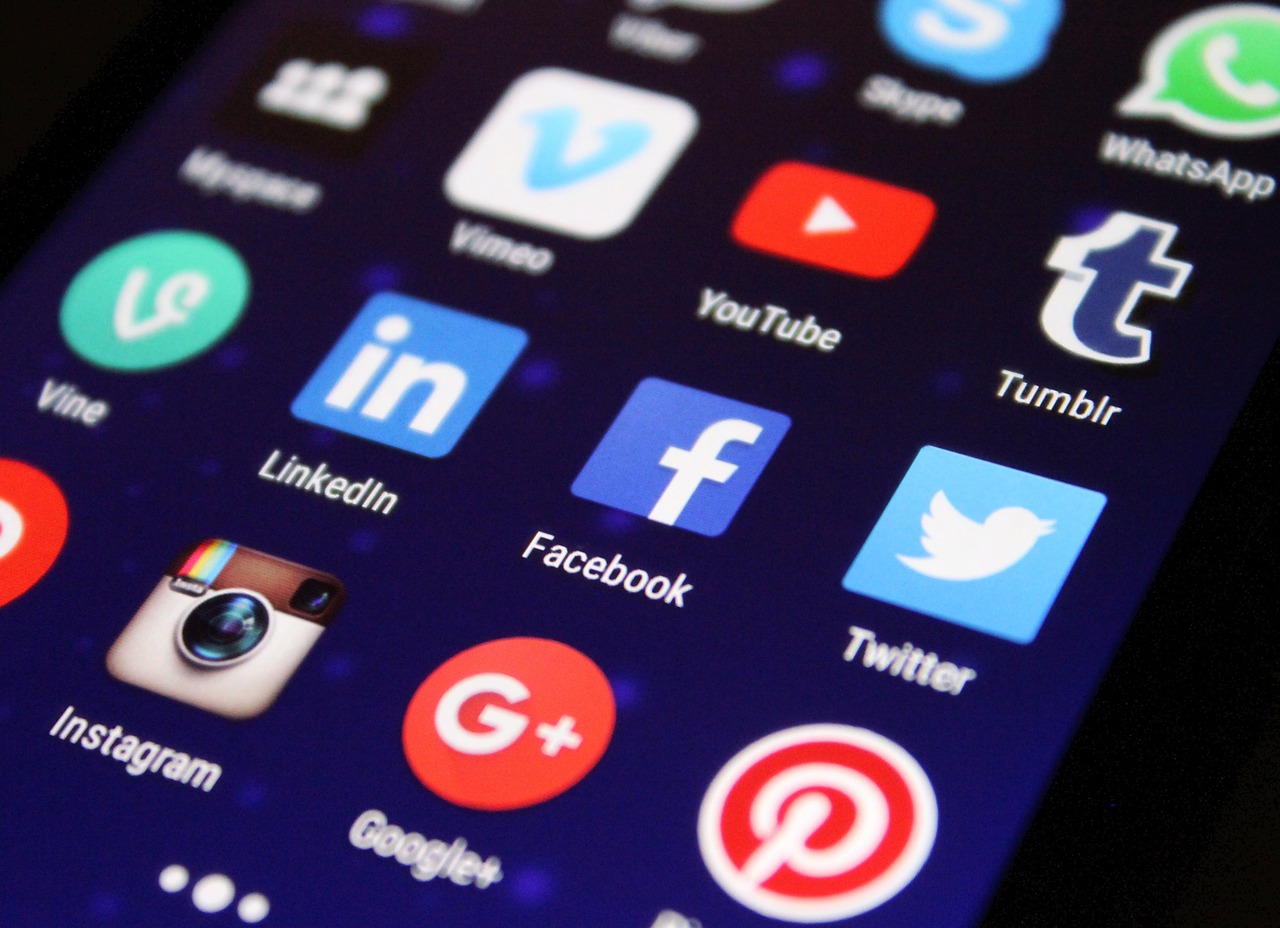Study Breaks is a time capsule of its writers’ work, depicting pop culture and college life since its inception in 1988. TV, movies, music, books, social media and other forms of media are covered on the site, segmenting the lives of its college writers. Each article covers a topic usually referencing digital media that the writer is interested in and is involved with.
The articles are part of the writer’s cultural sphere of interest and they are sharing that interest with the readers. Through reading these articles, the readers’ cultural sphere of interest expands their ever-growing daily media cycle, which is in turn influenced by the forms of digital media they view. Each new article and subsequent interest mix together, forming broader views of culture, interest and affiliations.
We are truly within a cultural renaissance in the digital age, where pop culture is instantly accessible at our fingertips. Within breaks between classes, we can learn about and get insights into the lives of friends, family and celebrities. We can develop our identities within technology to benefit our personal interests and goals. In fact, to expand our cultural spheres of interest it is essential to develop our goals through digital media. However, that can only be done if we understand the media we are consuming.
Defining Categories of Digital Media Usage
According to a 2018 Nielsen study, “American adults spend over 11 hours per day listening to, watching, reading or generally interacting with media.” While this may seem shocking for some to read, to truly understand this data it needs to be broken up into different categories of use.
The first category is the type of digital media used. This relates to the device the media is played from, such as a television or a laptop. Each different device has different functionalities that in turn influences how we use the device to decode and enjoy media. On different mediums, information can be communicated in different ways.
The second category is the primary activities we do on our devices. For example, the majority of people use their phones for social media and the majority of people who watch TV, do so on their televisions. Most devices nowadays can do almost anything another device can do — the functionality and form of these devices are built around certain functionalities.
The last category defines the variety of media we consume on each device. A smartphone is the best at making calls, a television gives the best viewing experience and computers are best for running programs. Each of these devices can do those other functions; however, what we use them for should be understood as a lens analyzing the creation of our spheres of interest. The different types of apps used on our phones and the different types of media consumed in each app defines our actual interests within our sphere.
The separate activities we do on our digital devices relay a certain skillset and require a specific type of analysis to use. Social media platforms such as Instagram, Pinterest and Tumblr require users to rely on visual communication to discuss and develop ideas throughout the digital space. Social media platforms such as Reddit, Twitter and WhatsApp require users to use written communication to convey their messages the most accurately. Within each of these platforms are also sub-components that develop a user’s broad ability to connect their skills within the platform.
Snapchat combines both written and visual communication to obtain a more personal feel than other platforms. Snapchat’s media creation structure combines text, video and images to create moments that feel genuine to users. Snapchat stories go away after 24 hours and messages are time-sensitive, being deleted after getting clicked on.
This means that communicating on Snapchat has the least amount of lasting impact out of any type of social media message. This relative privacy compared to other platforms, along with its media creation structure, provides users an experience that more resembles real-life interactions. Snapchat is most effectively used to connect local communities and personal friend groups, taking over the role Facebook used to play in the digital world.
Memes: Communication in the Modern Age
Memes as a medium of communication is new to the digital age and has really resonated within millennial and Generation Z communities. These two generations use memes to communicate different elements of culture from person to person to relate themes and messages, generally to form comedy and to connect groups of people who feel isolated in the digital space.
Memes function almost in reverse to how Snapchat functions. Memes are built in similar format to Snapchat messages — in fact they are extremely popular to post on Snapchat — but memes are best used to connect global communities of people. The messaging used in memes is deliberate, similar to forms of art. These messages usually have narrower meanings that only certain people can truly appreciate.
Based off the quick readings people have viewing memes, people can both interpret and spread messages quicker than ideas can be spread on Snapchat. Simply by tapping a few times, a message can be shared with thousands of people, who then can spread that same message within their own communities.
Memes also widely spread the messages of pop culture. If a significant event happens in politics, memes would be created within a span of 30 minutes covering the general viewpoints of the politicians’ audience. Memes would also be created highlighting iconic moments within the event. Memes embody the forms of specific people, places and things, where other forms of media experience cost and logistical restraints.
In its own way, memes are breaking down barriers similar to other older mediums in their respective generations. In the past, the TV network HBO was synonymous with showing graphic nudity. Before HBO, movies broke viewers moral boundaries and argued over larger cultural issues and norms.
Even before movies there were books discussing the subtleties of morality. Today, memes are posted online by a variety of people questioning social constructs, norms and regulations. Memes have taken the form of intellectual debate and societal satire juxtaposing what we usually see in the media, truly embracing the digital landscape where anyone can be a critic or a creator.
Marking Our Digital Identities
While meme culture and pop culture can be intertwined with each other, the internet has gotten to a point where pop culture encompasses niche interests. Social media communities allow people with similar perspectives and interests to communicate with each other, unlike ever before. While shows on network television would’ve been cancelled for 50,000 views, internet communities with that many members are lively.
These smaller online communities have similar social ties as in-person communities, i.e. members of organizations, athletic teams and Greek life. The communities can only exist on the digital space because digital life is intertwined with real life. In the digital sphere, people can portray themselves more as individuals exploring deep reaches of interest to connect themselves with people all across the world with similar interests. By connecting people with niche interests, these communities subjugate a large population of digital users who want to relate on more personal levels to be able to do that.
That being said, social media use on the internet sometimes lacks a personal feel. Without being able to read a persons’ intentions, social media can feel like you are going back to high school. People online are harsh and defensive, hardened by the fact they have to defend their individuality directly from people with compromising views on major forms of digital identity: “an online or networked identity adopted or claimed in cyberspace by an individual, organization or electronic device.” The wrong posts online can result in full-scale social isolation costing people outside the digital landscape. The repercussions for making the wrong post online can be severe, costing people their jobs and their families.
Digital Life and Real Life Intermingle
Another problem within the digital age is deteriorating mental health. Anxiety affects 18.1% of US adults, over 40 million people in the United States, a number that has been rising in recent years. Depression has also been on the rise, which many equate to the rising use of social media causing in-person communities to diminish and not be formed.
The use of social media platforms as a landscape for discourse causes grief, due to discrepancies amongst people’s opinions and unspoken rules and norms not being addressed, which would mandate behavior on digital media platforms. The rules of social media aren’t as clearly defined as the rules of real life and lack the subtlety that in-person communication has.
This causes anxiety and depression for many people who constantly need to be instantly gratified when posting something on their phones with likes or need to constantly check their posts and posts of people they follow. This dependence forms an addiction, in which many people are stuck in. Social media puts people in the public 24/7, hoping for full-scale acceptance and online fame. This attempted perfection can never be truly accomplished and many people run to their phones as soon as they experience a problem or a minor inconvenience.
Maybe instead of using digital technology this way, it should be looked at as a tool to improve ourselves. Our digital selves and real selves collide more than ever before, causing people to question who they really are. While there may be great debate over identities and questioning, we must embrace technology and use it to better ourselves.
We can set goals to regulate and accomplish things through digital platforms. In fact, digital media and social media are used best to garner a certain self-induced definition as to who you are and can be used to supplement and create an image for yourself. No matter what goals you have in life, the internet can be used as a resource to develop yourself.
Look at everything you do on digital devices with a purpose. If the app you are using holds no relevance or interest to your day-to-day goals or doesn’t satisfy any needs you have, simply don’t use it. This seems conceptually easy to do, but look at your own phone, look at the people you follow, look at the amount of time you spend and see what it is doing to benefit you. When was the last time you went a day without your phone?
Technology, like any tool created by humankind, isn’t inherently bad, it simply can be used in bad ways. We are lucky to be able to have such technology in our pockets and must use it to not only to benefit ourselves, but to spread information to others. Ultimately, like in real-life, we as individuals decide who we are and what we represent.
















